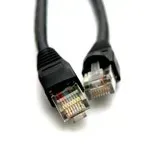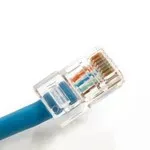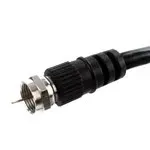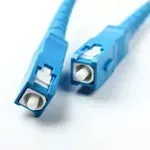Network Cabling Services
Request Callback
Hero Request Form
Professional Network Cabling Services
The power of technology starts with your network cables. These cables connect your devices, giving them the versatility and functionality your business needs to thrive. Trust Affordix to understand the crucial role that reliable network cabling plays in your business. Our network cabling services are designed to meet your technical needs with precision and efficiency, making us the first choice for computer support in Ft Worth, TX. We work with:
- Category 5e
- Cat 6e
- Cat 7
- Fiber (commonly used for voice or data communications cabling)
Serving the DFW area since 1997, our team ensures your business stays connected and operational with computer support Arlington, TX can rely on. Call or text us today to discuss your network cabling needs.
When to Reach Out for Network Cabling Services
Knowing when to contact a professional for network cabling services can save your business time and money. Here are some common indicators that it’s time to get in touch with us at Affordix:
- Frequent network outages
- Slow data transfer speeds
- Poor connectivity in certain areas
- Outdated cabling infrastructure
- Planning an office move or expansion
- Need for higher bandwidth capabilities
If you’re experiencing any of these issues, contact us now for expert network cabling services and computer support in Ft Worth, TX and the surrounding areas.
Our Network Cabling Options
We currently carry four varieties of network cables for our customers at Affordix. Read about them below:

Category 5 and Cat 5e
For several years, Cat 5e has been the standard for data networks. With transport speeds up to 100 Mbits/s, Cat 5e cabling provides outstanding service and is an affordable option for most data network infrastructures. Cat 5e replaced Cat 5 as a standard in 2001. The most common applications are 100BASE-T or common data networks and the increasingly popular VOIP systems. With 100Mbit/s capacity, Cat 5e is the most common cable of choice used today.

Category 6 and Category 7
Cat 6 is a cable standard for gigabit ethernet. As network administrators are pushing their networks to higher levels of performance, Cat 6 is a desirable alternative to Cat 5e, with speeds 10 times as fast. Cat 7 is a communications cable with four twisted copper pairs. While also having the same distance limitation of 90 m for horizontal runs as previous copper standards, Cat 7 cable meets even more stringent specifications for both crosstalk and system noise.

Coaxial and Video Cabling
Coaxial cable is typically used for video transmission or high-speed data applications. It has both an inner conductor and an outer conductor through which it carries its signal. There are many coaxial cable types, but the most common types in commercial applications for video service, video surveillance, or high-speed networks are RG-6 and RG-59. For video applications, it is essential to choose a coax cable that is of the 75 ohm type. Some 50-ohm coax cables are suitable for data networks but are not sufficient for video transmission.

Fiber Optic Cabling and Connectors
Fiber offers the top speeds and reliability that sophisticated networks require. We recommend using fiber for high-speed applications, connecting networks, MDFs to IDFs, building-to-building connections, or for cable runs over the 90 m distance limitation of standard copper cables like Cat 5e or Cat 6. Fiber optic cables are made from one or more optical fibers, which are encased in a protective plastic coating to transmit data signals with light pulses. It's an effective way to carry large amounts of data with minimal signal loss and increased speed.
Which option is best for your business goals? Call or text us now to learn more.
Benefits of Choosing Affordix for Computer Support in Ft Worth, TX
Picking the right team for your managed IT services matters. How can you be sure Affordix is the right choice for you? Consider the things that define us:
- Over 35 years of experience
- Local and veteran-owned since 1997
- Free, on-site consultations
- Emergency service options
- Price matching to meet or beat competitors’ rates
- Reliable and prompt responses the same business day
- All work guaranteed for 30 days
- Affordable, reliable service
At Affordix, we're proud to meet your technical needs. Get in touch with us now!
Get in Touch With Affordix for Computer Support in Arlington, TX
Your business deserves the best in network cabling services. Reach out to Affordix to discuss your needs and schedule a consultation. We're here to keep your business connected and efficient with the computer support Arlington, TX prefers.


Share On: